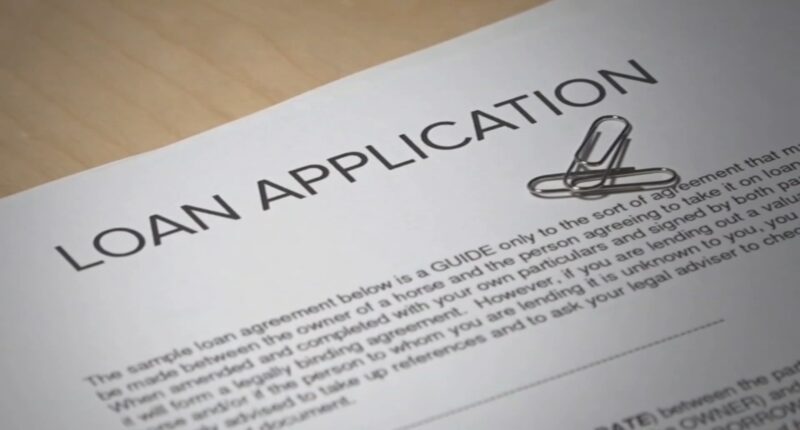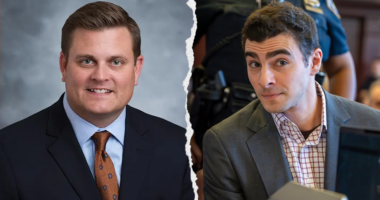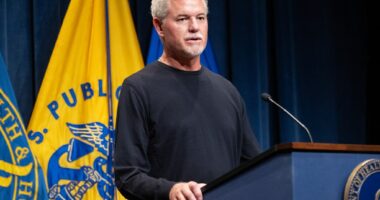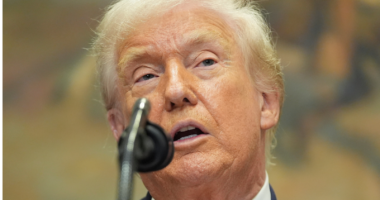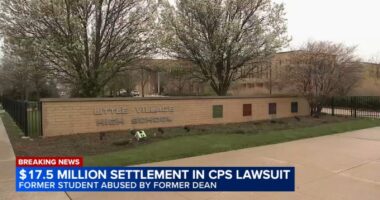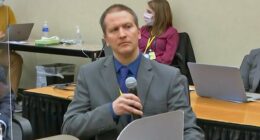Share this @internewscast.com
Andrea Murzello holds a doctorate in pharmacy and maintains a secure job at a nonprofit. Nevertheless, she claims she cannot afford to expand her family due to recent changes under the Trump administration’s student loan policy.
She’s one of nearly 8 million borrowers who will see their loan balances start increasing again on August 1.
This month, the Department of Education revealed that they would begin accruing interest again on loans held by participants of the Saving on a Valuable Education (SAVE) plan. This income-driven repayment plan was introduced during Biden’s administration to support borrowers overwhelmed by high-interest loans.
Murzello, aged 34, completed pharmacy school in 2016 with a student loan debt exceeding $200,000. Initially, she joined a repayment program for public workers, with monthly installments of roughly $1,000.
In 2023, she transitioned to the SAVE plan, reducing her monthly payments to around $400. She even managed to cease payments temporarily last year, thanks to a court injunction that paused the SAVE program.
Before SAVE, Murzello couldn’t make a dent in her balance despite making monthly payments because of the rising interest, she said.
“My debt wasn’t decreasing at all; in fact, it was increasing since I couldn’t pay enough to make a difference,” Murzello explained. “Joining the SAVE program was a major relief for me and my family.”
She had hoped SAVE would offer long-term stability. But now, she and her husband are postponing plans for a second child.
“I think the frustration comes from the massive amount of changes that are occurring,” she said.
What’s changing for SAVE borrowers?
The SAVE program was introduced in August 2023, aiming to lower monthly installments based on income and household size, curb escalating interest, and speed up loan forgiveness for certain low-income borrowers.
“These are people or individual families that have low income that were really relying on that that zero dollar for payment, that no longer are going to have that option,” said Roxanne Garza, director of higher education policy at EdTrust, a left-leaning education advocacy group.
But SAVE faced legal challenges from the start.
Last year, two federal judges in Kansas and Missouri blocked key parts of the program, arguing that the Biden administration overstepped its authority by enacting debt relief without Congressional approval.
Following the court decision, SAVE borrowers were placed in no-interest forbearance, with payments paused and balances frozen since last summer.
But starting August 1st, interest will start to accrue again.
Borrowers will still be able to be granted forbearance – meaning putting a delay on their monthly payments – but interest will now be applied each month.
The Department of Education hasn’t said when this will end. Calling SAVE an “illegal” plan in a press release, Education Secretary Linda McMahon urged borrowers to switch to a “legally compliant repayment plan” instead.
Student loan experts say this move causes more confusion for borrowers who are already bogged down in trying to navigate the rapidly changing landscape of student loans. Besides the change to SAVE, more extensive shifts to student loans were passed in the Trump administration’s domestic policy bill, the One Big Beautiful Bill.
“Even diligent people grow weary of understanding what their situation is and their options,” said Ken Ruggiero, founder and CEO of private loan provider Ascent.
And Garza, of EdTrust, warned that it could be a long wait before getting clarity from the Department of Education. “I’m not sure how easy it will be to get your questions answered or how long it will take to actually have your application processed to switch into a different plan, especially now that you will likely see like a surge of people acting because of the interest accrual coming back online,” Garza adds.
The Department already has a backlog of roughly 1.5 million applications from borrowers seeking to switch into different income-driven repayment plans, CNN has previously reported.
Experts encourage borrowers who are on the SAVE plan to be as proactive as possible to understand their options and figure if another plan may be better.
Paralyzed by student loans
The confusion over student loans is creating broader societal issues. Nearly three quarters (71%) of borrowers surveyed in a national poll have said that student loan debt has delayed a major life event, such as buying a home, having children, or getting married, according to the Gallup-Lumina Foundation’s Cost of College report released last spring.
And in some important sectors, such as medicine, it is contributing to a looming crisis. According to the Association of American Medical Colleges, the US is expected to face a deficit of up to 40,400 primary care physicians by 2036 – an expected shortfall the group has attributed in part to the steep cost of medical education.
Bronte Remsik, a 31-year-old medical resident, graduated from Campbell University in May 2024 with close to $300,000 in student loans. She had worked with financial counselors and immediately applied for the SAVE plan.
But her application was never processed. Her loan servicer advised her to “wait it out.” She couldn’t apply for a different repayment plan, as it would cancel out her SAVE application. With a growing federal backlog and no clear guidance, she feels stuck in limbo.
“All of the people that I’m reaching out to who are supposed to help me also don’t know what to do,” she said. “And now I’m being told that the interest is going to start accruing on my loans when I’m not even able to enroll in a payment program.”
“The financial walls just feel like they’re crushing down around me when I thought graduating from medical school was the big win,” she said.
